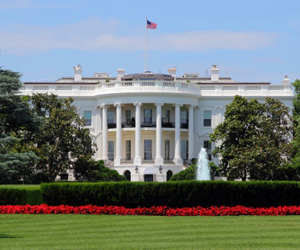Obama Administration Elevates Role of Behavioral Science in Government Services
 Behavioral science will have an increasingly integral role in the way the US government operates and provides services under a new set of actions by the White House.
Behavioral science will have an increasingly integral role in the way the US government operates and provides services under a new set of actions by the White House.
President Obama signed an executive order September 15 directing federal agencies to inject more behavioral science into their activities and services. That order also formally establishes a federal Social and Behavioral Sciences Team (SBST), a group of experts in behavioral science tasked with translating scientific findings into improvements in federal programs.
The President’s action means federal agencies will have to develop, rigorously test, and evaluate strategies for applying behavioral science insights to ease American’s access to federal programs through such methods as simplified communications and options that are made clear and user-friendly.
“A growing body of evidence demonstrates that behavioral science insights – research findings from fields such as behavioral economics and psychology about how people make decisions and act on them – can be used to design government policies to better serve the American people,” Obama’s Executive Order states. “By improving the effectiveness and efficiency of Government, behavioral science insights can support a range of national priorities, including helping workers to find better jobs; enabling Americans to lead longer, healthier lives; improving access to educational opportunities and support for success in school; and accelerating the transition to a low carbon economy.”
The order builds off the work of the SBST, whose new annual report details its first round of projects that employ behavioral science insights to improve program outcomes. These projects were conducted in collaboration with such agencies as the departments of Defense, Education, and Veterans Affairs. Many of the projects are based on the social and cognitive psychology that underlies a behavioral economics approach centering in part on the premise, as APS William James Fellow and Nobel Laureate Daniel Kahneman explained in a September 15 White House symposium, that people behave in their best interests when they’re induced, rather than compelled, to do so.
“When it comes to changing behavior, you can either increase pressure or reduce resistance,” Kahneman said at the event, titled Using Behavioral Science Insights to Better Serve the American People. “And reducing resistance is always better.”
Among the strategies that SBST and the agencies tested were:
- a single email that highlighted the three steps needed to enroll in a workplace savings plan, which nearly doubled the rate at which military service members signed up;
- reminder emails sent to Federal student-loan borrowers who missed their first payment, a program that yielded a 29 percent increase in the number of borrowers making a payment; and
- reminder letters mailed to individuals who had started but not finished applying for federal health insurance, which increased the completion rate of applications by 13 percent.
“As a result of these projects, more Servicemembers are saving for retirement, more students are going to college, more Veterans are accessing their benefits, more farmers are obtaining credit, and more families are gaining healthcare coverage,” says Maya Shankar, Senior Advisor for the Social and Behavioral Sciences at the White House’s Office of Science and Technology Policy (OSTP).
The intensified governmental emphasis on behavioral science arises in large part from a May 2013 White House workshop, Psychological Science and Behavioral Economics in Service of Public Policy, held in conjunction with the 25th APS Annual Convention. That workshop brought together psychological scientists, behavioral economists, and government leaders in Washington, D.C., to discuss how to incorporate behavioral empiricism into policymaking. APS was an organizer of the event along with OSTP, the National Institute on Aging, and the White House Council of Economic Advisers. The workshop included presentations from some of the leading figures in psychological science and behavioral economics, including Kahneman and APS Past Presidents Walter Mischel, Susan Fiske, John Cacioppo, and Elizabeth Phelps.
That event, the creation of the SBST, and the Executive Order all signal government leaders’ strong respect and interest in the insights of behavioral scientists.
“Among other things, this initiative is a recognition that behavior is at the heart of so many issues that are of central concern to the nation, from financial security to health to energy conservation,” said Sarah Brookhart, APS Executive Director. “Equally important, it is a recognition of the important role of psychological science and other behavioral science disciplines in improving the circumstances of individuals, families, and society.”
The SBST was inspired in part by the Behavioural Insights Team that British Prime Minister David Cameron commissioned in 2010 to test public policy interventions through randomized control trials. That team’s research demonstrated ways to increase tax compliance, home energy conservation, and charitable giving through social and behavioral inducements.
For its second year of operation, the SBST has more than 20 new projects planned with such agencies as the Social Security Administration, the US Census Bureau, the Federal Emergency Management Agency, the US Agency for International Development, and the departments of Education and Energy.
For more information about the Executive Order and the SBST, visit https://sbst.gov/.





Comments
Great decision moving forward to include behavioral science as a way to improve decision making process and increase relationships and productivity
APS regularly opens certain online articles for discussion on our website. Effective February 2021, you must be a logged-in APS member to post comments. By posting a comment, you agree to our Community Guidelines and the display of your profile information, including your name and affiliation. Any opinions, findings, conclusions, or recommendations present in article comments are those of the writers and do not necessarily reflect the views of APS or the article’s author. For more information, please see our Community Guidelines.
Please login with your APS account to comment.